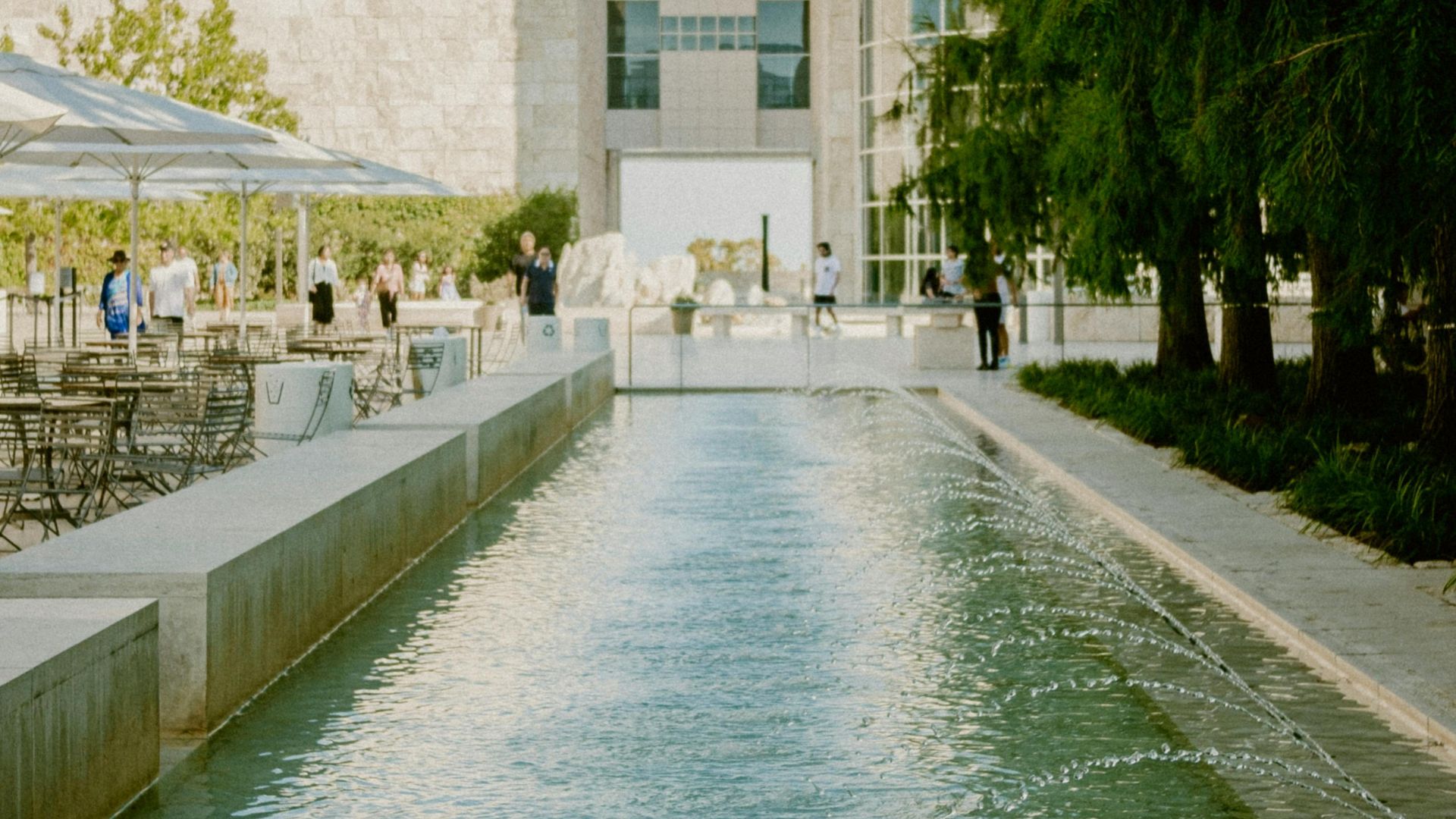Visiting the Getty Center in Los Angeles felt like stepping into a place where art, architecture, and nature all meet. If you’re searching for incredible artwork, beautiful buildings, and quiet corners surrounded by gardens, the Getty Center should be high on your list.
My day at this hilltop museum was full of surprises and peaceful moments, with the city stretching out below me.
As I wandered through galleries, gardens, and terraces, I kept thinking about how unique this place is. It’s not just about admiring paintings or sculptures; it’s about soaking in the atmosphere—there’s something inspiring and calming about being here.
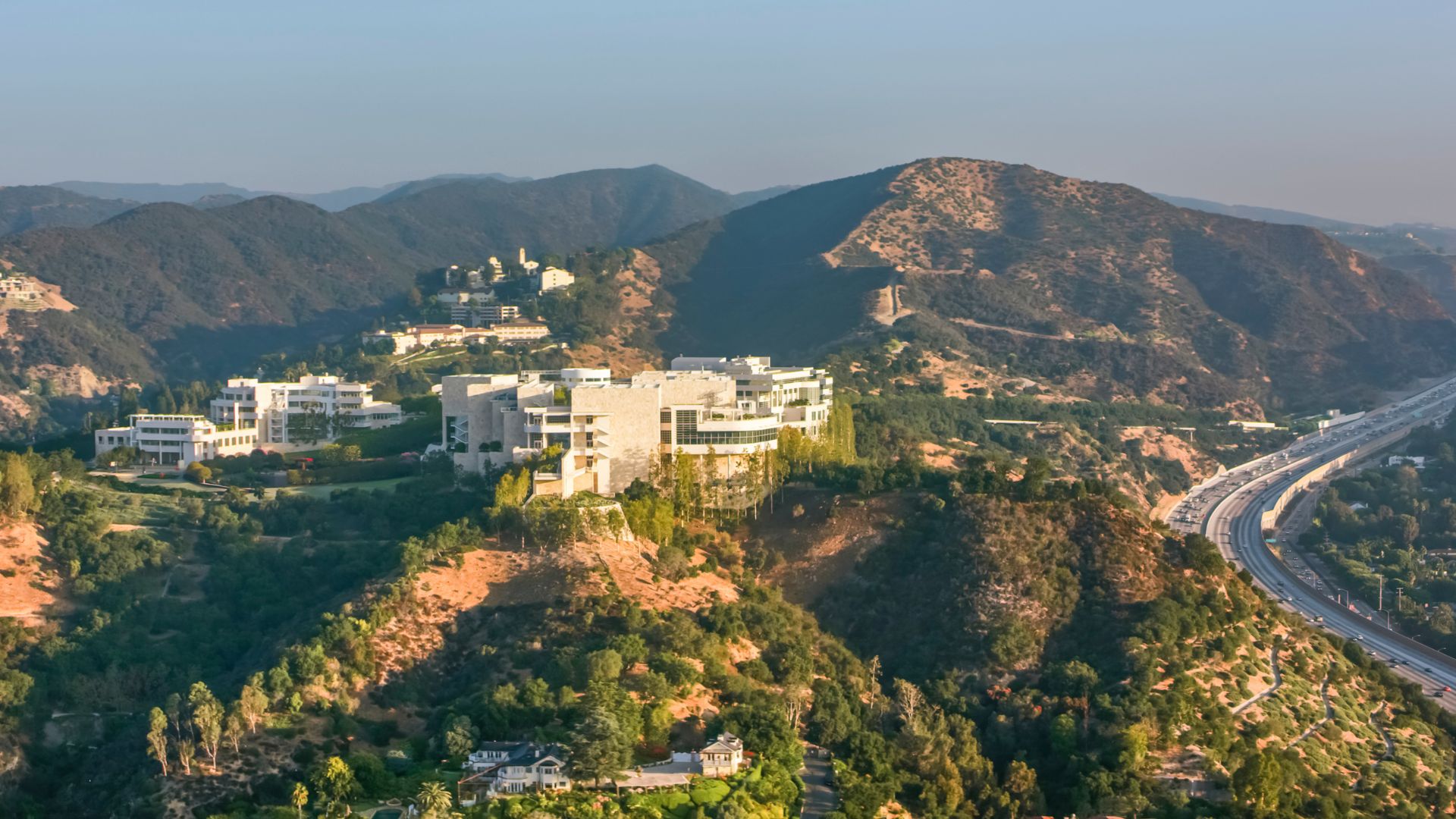
Art Collections and Galleries
Walking inside, I immediately felt the energy of a world-class museum. The Getty’s galleries hold everything from masterpieces of European painting to ornate decorative arts and striking photography.
European Paintings
The European painting galleries stood out for me. The Getty showcases works from the Middle Ages up through the early 1900s—think Renaissance, Baroque, and Romantic art all under one roof.
Big names like Van Gogh, Rembrandt, and Monet line the walls. I found myself lingering in front of Van Gogh’s “Irises,” just taking in those wild brushstrokes.
Gallery labels broke down each painting’s story, from the artist’s background to the year it was made. That extra bit of info made the art feel more alive and connected to history.
Some highlights from these galleries:
- Renaissance Masters (Titian, Raphael)
- Dutch Golden Age (Rembrandt, Vermeer)
- Impressionism/Post-Impressionism (Monet, Van Gogh)
Decorative Arts and Sculpture
In the decorative arts rooms, the craftsmanship really stood out. Furniture, porcelain, and tapestries showed off the skills of European artisans from the 1600s to the 1800s.
A lot of these pieces came from royal collections or wealthy homes. Gilded clocks, crystal candelabras, and detailed sculptures caught my eye, each grouped by era or country.
The sculpture galleries had works in marble and bronze. Some statues looked lifelike, while others leaned toward the imaginative and mythological. I loved how the sunlight played across the curves and details.
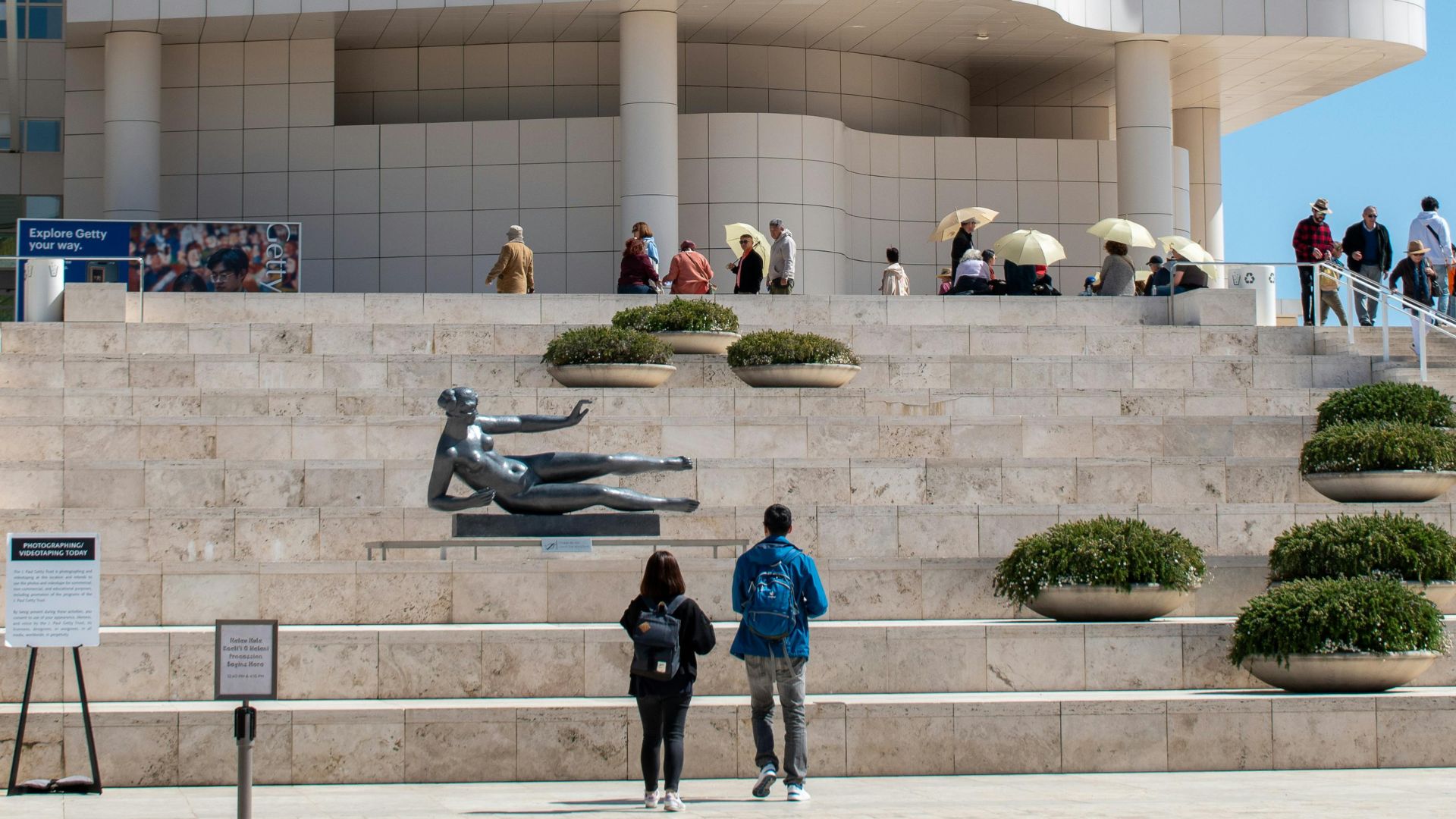
A few things you’ll see:
- French Rococo furniture
- Italian Baroque sculpture
- Porcelain from Meissen and Sèvres
Photography and Modern Art
The photography galleries brought a totally different vibe. Vintage prints hung on the walls, capturing early experiments with light and shadow. Names like Walker Evans and Julia Margaret Cameron popped up.
Modern art spaces felt bold and sometimes a little mysterious. I came across pieces that pushed boundaries, with new materials and ideas. The exhibitions change often, so there’s always something unexpected waiting.
The Getty Trust keeps these collections fresh, making sure visitors get a taste of both the old and the new. Handy labels gave background on the artists and their work, which I always appreciate.
Architectural Wonders of the Getty Center
The Getty Center really turns heads with its modern look, natural materials, and the way it seems to grow out of the Los Angeles hills. Walking around, I kept noticing how seamlessly art, architecture, and gardens fit together.
Innovative Design by Richard Meier
Richard Meier, the architect behind the Getty Center, clearly loves clean lines and open spaces. His style is all over the buildings—crisp white shapes, plenty of sunlight, and a sense of openness.
Michael Palladino from Meier’s firm played a big role too. They focused on how people move from inside to outside, making every path, window, and courtyard feel intentional.
The museum sits high on a Brentwood hill, offering sweeping views of Los Angeles. Meier worked with the land’s natural slope, so some buildings step down the hillside. It all feels balanced, like the campus belongs right where it is.
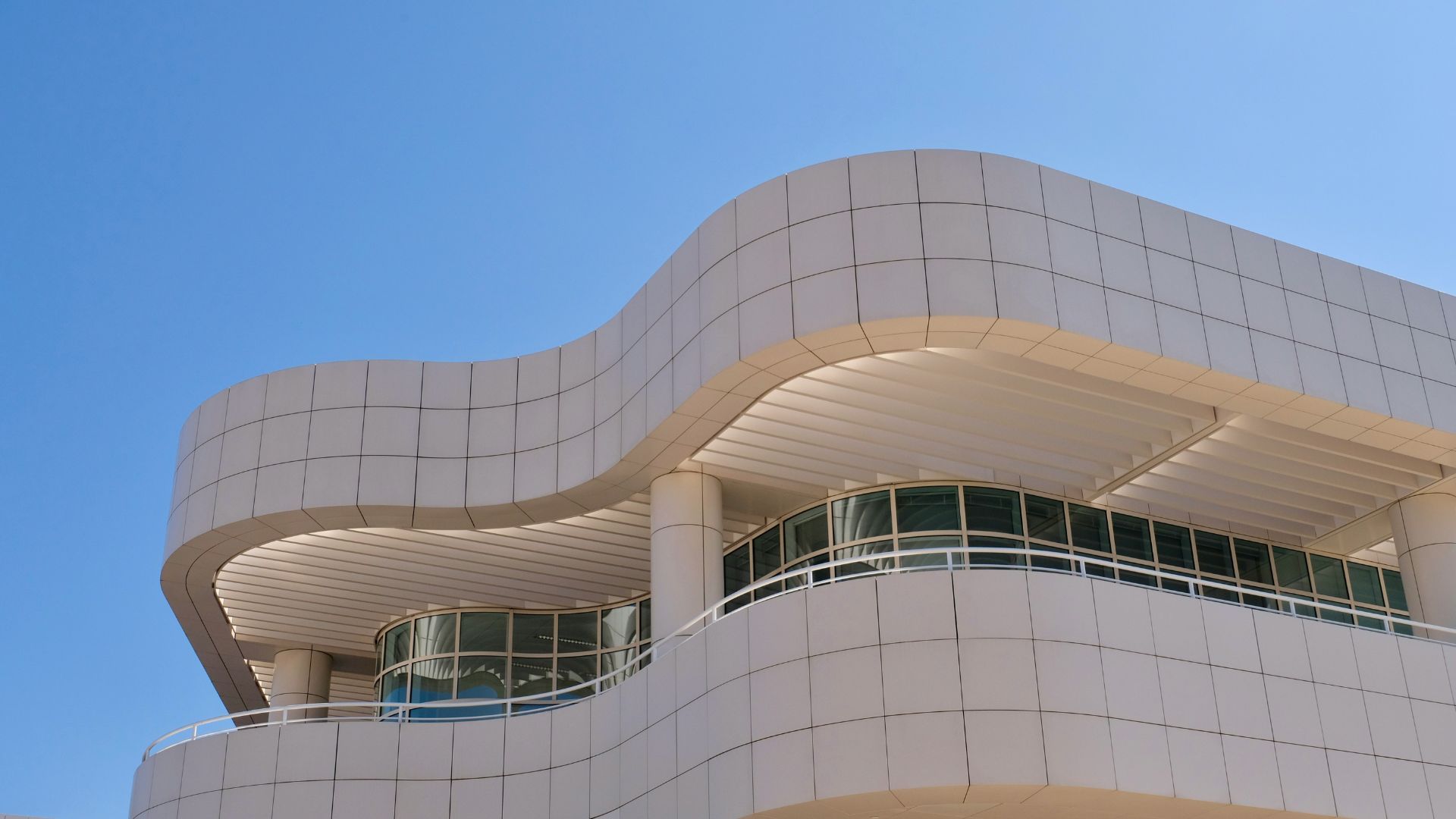
Travertine, Steel, and Glass Elements
What really grabbed my attention was the travertine stone everywhere. The creamy, textured blocks came all the way from Bagni di Tivoli in Italy. I read somewhere that the museum used over 1.2 million square feet of travertine—now that’s a lot of stone!
Steel and glass mix with the travertine to create a look that’s fresh and modern. Sunlight pours through the glass walls, making the art glow. The stone keeps the buildings cool, and the steel adds strength.
It’s not just about looks, though. Each material serves a purpose—stone for temperature control, steel for support, glass for light and views. The way they blend makes every corner of the museum stand out.
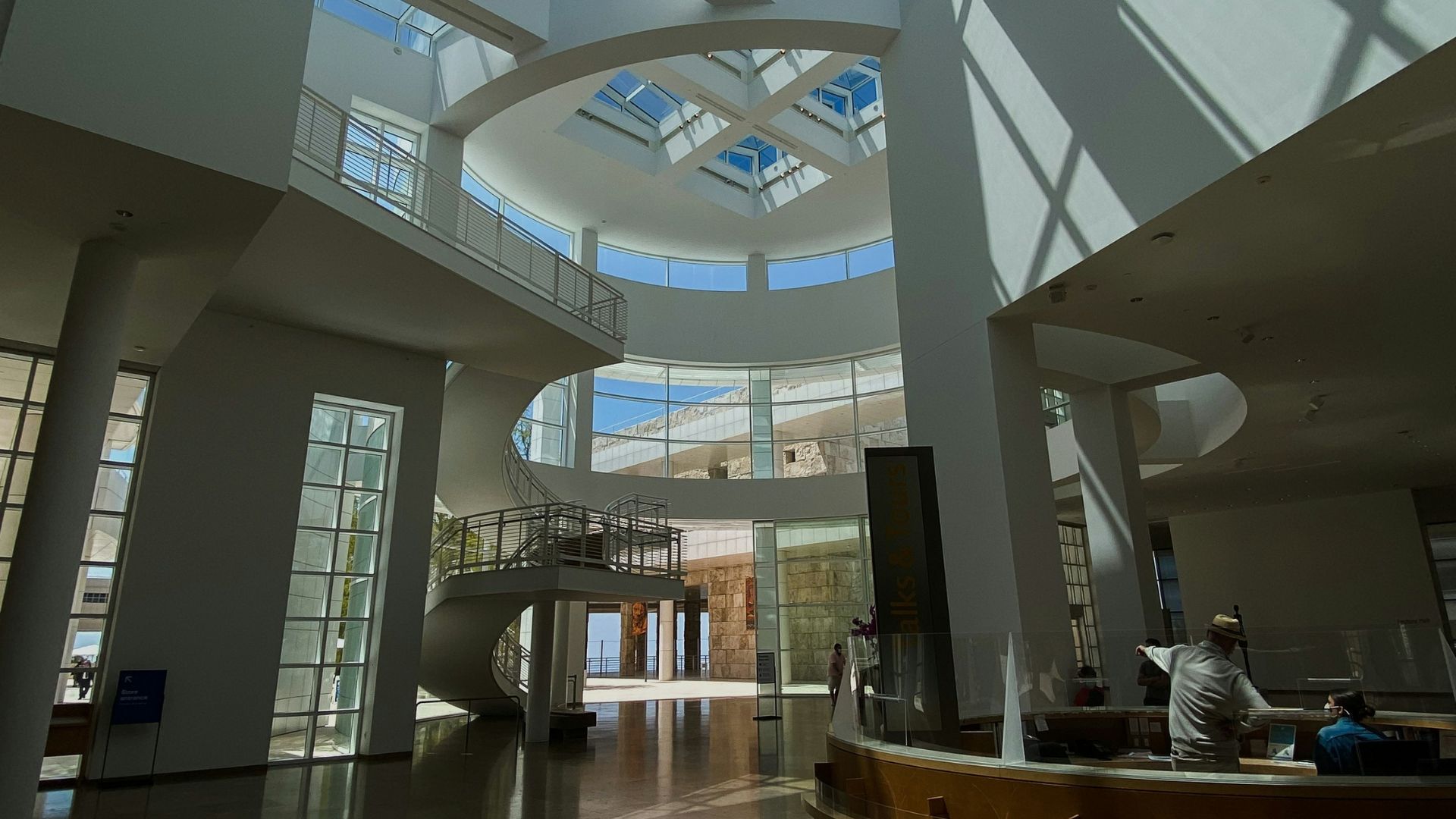
Construction and Engineering Feats
Building the Getty Center took serious effort and patience. The site sits almost 900 feet above the city, so moving all that stone and steel up the hill couldn’t have been easy.
Engineers used over 1,200 deep concrete supports—called caissons—to anchor the Center into the hillside for earthquake safety. I found it fascinating how the design team balanced beauty and practicality.
Every building fits into the landscape, connected by paths, plazas, and gardens. I never felt lost, even with all the twists and turns. The behind-the-scenes planning really shines through once you’re there.
Strolling Through the Spectacular Gardens
The Getty Center’s gardens are as much a draw as the art inside. Each has its own personality, from living sculptures to sweeping views of the city.
Central Garden By Robert Irwin
Robert Irwin, an artist, designed the Central Garden, and you can tell. I wandered along winding paths, where every turn revealed new plants and colors. Over 500 types of plants fill the space, so it’s always changing with the seasons.
A stream runs through the middle, leading to a big circular maze made of azaleas. Stone bridges cross the water, and flower beds line the way. The mix of textures and colors creates a space that feels both designed and wild.
Benches invite you to sit and enjoy the views. The garden connects art, nature, and architecture in a way that just feels right. Helpful signs along the path share details about the plants and design choices.
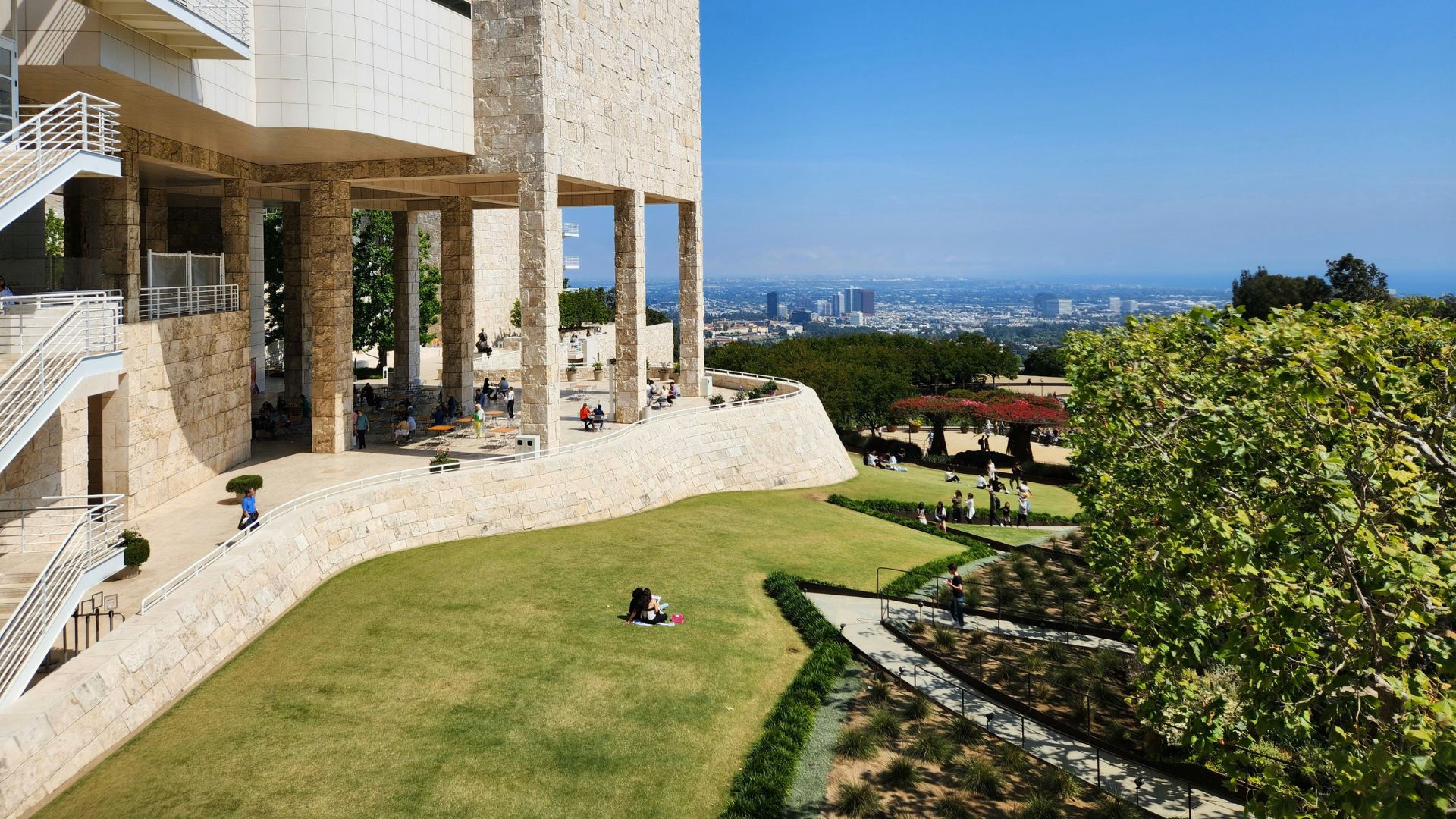
Cactus Garden and Unique Landscaping
The Cactus Garden sits near the South Promontory and, honestly, it’s pretty striking. Cacti and desert plants are arranged to show off their shapes and colors. From here, I caught panoramic views of Los Angeles and the mountains beyond.
Tall, spiky cacti line smooth paths and stonework, creating dramatic contrasts. Succulents add bold patterns, and the drought-tolerant landscaping makes so much sense for LA’s climate.
This garden felt both calming and energizing. The open space and unique plant choices made me want to linger, soak up the sun, and notice the thoughtful care in every detail.
Breathtaking Views Over Los Angeles
The Getty Center serves up some of the best views in LA. I could see all the way to the Pacific Ocean and spot all sorts of Southern California landmarks. The mix of city and nature makes it a dream for photographers.
Vistas of the City and Pacific Ocean
From the upper terraces, the city just stretches out in every direction. The skyline pops up in the distance, with downtown buildings easy to spot.
On clear days, the Pacific Ocean shows up as a blue band at the horizon. Sometimes the sunlight makes the water sparkle. The Santa Monica Mountains also add a splash of green to the view.
Watching the light change over the city and ocean, I felt a kind of peace. The gardens and patios are perfect spots to just stand and take it all in.
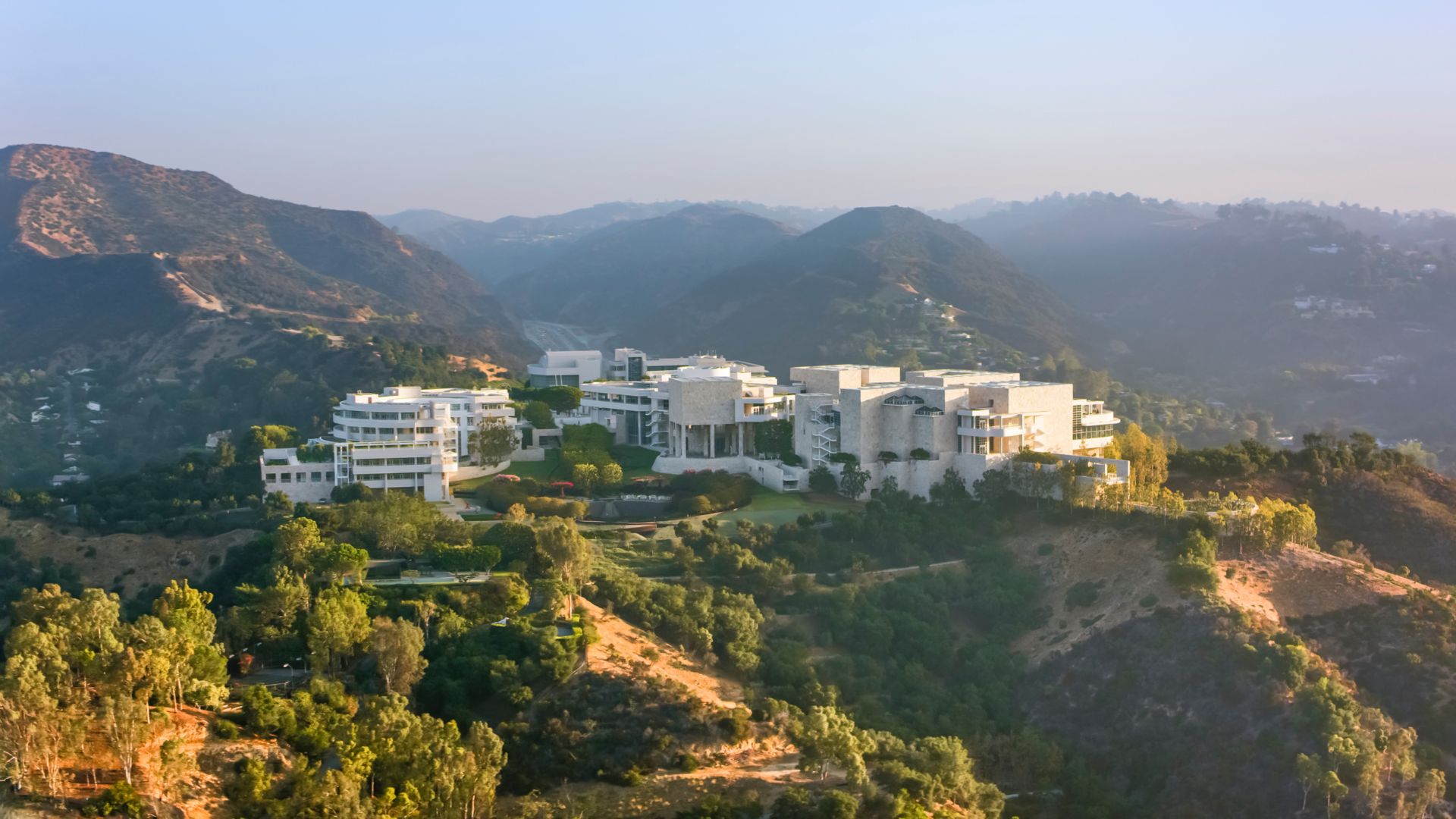
Outdoor Spaces and Photography Hotspots
There’s no shortage of outdoor spaces for relaxing or snapping photos. The Central Garden is a favorite, with winding paths and art around every corner. I made sure to walk out to the edges to find the best angles.
A few of my top photo spots:
- The overlook near the museum entrance
- Terraces by the café and sculpture garden
- The south promontory with its big ocean views
The combination of modern buildings and open sky gives every photo something special. I noticed lots of folks, myself included, pausing to capture the city, sky, and ocean. These views really stick with you long after you leave.
Dining and Amenities During Your Visit
When hunger hit, I found plenty of options and helpful visitor services. Grabbing lunch or finding my way around was easy, which made the whole experience even better.
Lunch at the Getty Center Restaurant
I stopped in at The Restaurant at the Getty Center for lunch. The place is known for its fresh, seasonal menu and those unbeatable views over LA. Floor-to-ceiling windows flood the space with light and showcase the hills.
The menu offered everything from salads and sandwiches to heartier entrees. I went with the Cobb salad—super fresh, with a tasty dressing. Vegetarian and gluten-free options were available, which is always nice. If you’re feeling fancy, there’s a prix fixe menu inspired by current exhibits.
The Restaurant gets busy, especially during peak lunch hours, so I’d suggest making a reservation if you’re set on a certain time. For something quicker, cafes and coffee carts dot the center, perfect for a snack or a drink on the go.
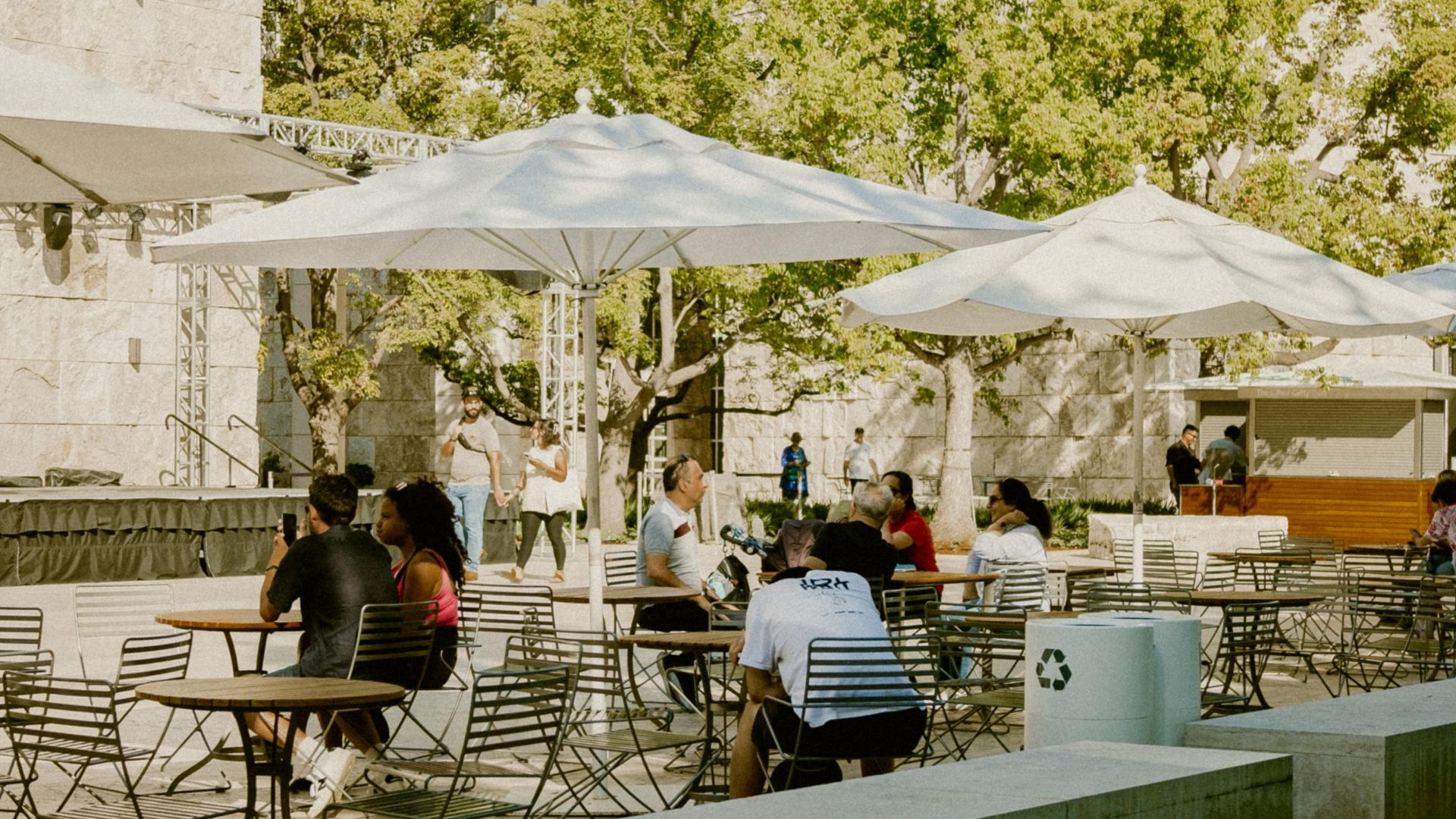
Parking and Visitor Services
Parking at the Getty Center sits tucked away in a secure underground garage right at the bottom of the hill. I paid the daily rate—pretty standard for LA, honestly.
After parking, I hopped on the tram that shuttles visitors up to the museum entrance. These trams run all day, so I never had to wait long.
Visitor services at the Getty Center are honestly a breeze to find. Signs for restrooms, water fountains, and coat check pop up everywhere you look.
Staff greeted me with a smile and seemed genuinely happy to answer my questions about museum maps or where to find certain exhibits. Free Wi-Fi covers the whole property, which made it easy to pull up info or post a few photos as I wandered.
They offer accessibility features too, like wheelchair rentals and accessible routes. I really appreciated how the thoughtful amenities and smooth parking setup let me just relax and soak in the art and gardens.
